Back to Their Origin
Every journey needs a beginning. For decades, this remains a memorable experience for the public audience. Whether for the glory achieved, or for its legacy that transcends generations.
Today's journey began with companies and developers adapting their endeavor in their first steps at creating games for consoles, more specifically for Nintendo's Famicon, launched in 1983. At the time, due to the overall perception of the genre and the logistic difficulties to saving your progress, the concept of a game with a longer story like RPGs seemed like a complex chore for consoles.
Ad
This preconception changed with the launch of Dragon Quest, published by Enix in 1986. Its proposal for an RPG designed for a console, with beginner-friendly mechanics and an innovative system in the genre, turned it into a sales success and consolidated the brand as a reference with the second game in the franchise, released less than a year later.
While the fate of these two companies would only become intertwined in 2003, the success of Enix's RPG was the trigger to start what would become the biggest brand of another game developer and publisher, Square - In 1987, Hironobu Sakaguchi would start to work on his first RPG, Fighting Fantasy, which, to avoid copyright conflicts with books of the same name, this title was renamed to Final Fantasy, released in December 18th.

Square's first RPG was a huge commercial success, and led to the release of sequels and new titles generation after generation, culminating in the legacy of one of the biggest video game franchises of all time, with 36 years, 16 mainline games and dozens of spin-offs and over 180 million copies sold, in addition to expanding into other media such as films, anime, manga, TV series and partnerships with other brands, such as Louis Vuitton and Magic: The Gathering.
In this article, after enjoying the classics in my review of the Pixel Remaster collection, I go back to their origins and evaluate what made the first Final Fantasy, in its original version for NES, a major milestone in the gaming industry.
How did Final Fantasy become a success?
Despite not fitting into contemporary molds and being considered one of the least famous titles in the franchise, Final Fantasy had significant sales success for its time.
According to Square for the Electronic Gaming Monthly, in 1994, the first game had sold 700 thousand copies in North America, and 600 thousand copies in Japan, being one of the main titles to solidify the role of RPGs on consoles, paving the way to improve mechanics and narratives that would culminate in the resounding success of Final Fantasy VII, in 1997.
Some key points were crucial for adapting the title to the growing market after Dragon Quest, to make it feel unique when compared to other games of the time. These were some of the main elements that made Final Fantasy a success:
Inspiration from Dungeons & Dragons
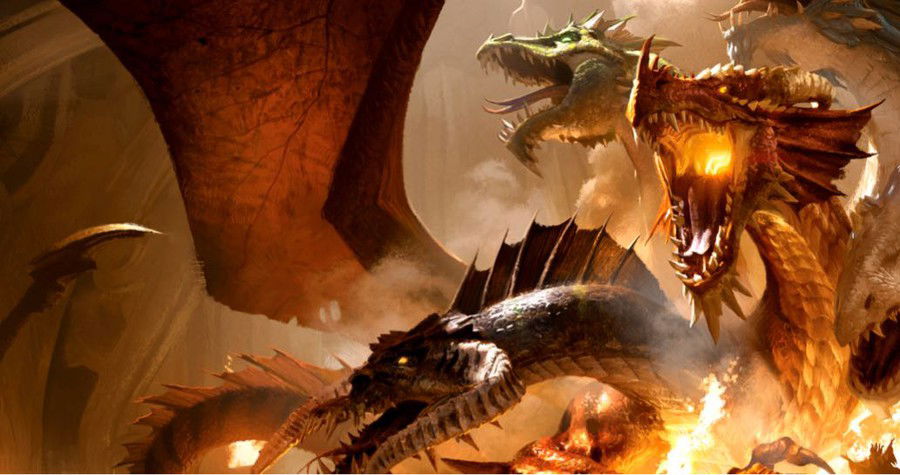
Dungeons & Dragons is a tabletop RPG series produced by Tactical Rules Studio in 1974. Today, the franchise is a property of Wizards of the Coast, is in its fifth edition and has its own series of famous electronic games, the Baldur's Gate trilogy.
Ad
It started the RPG system and popularized the genre to the point of reaching electronic games, serving as inspiration for several titles over the decades, including classics that influenced Final Fantasy's development, such as Wizardry.
Final Fantasy has several references and mechanics inspired by Dungeons & Dragons.
What sets Final Fantasy apart from other titles that made it attractive even to D&D fans was the way in which, despite using books as inspiration and exalting the nostalgia and belonging of its target audience, the game uses these concepts to create its own narrative.
The crystals (orbs in the original game), warriors of light, airships, and so on blended with the inherent parts of the classic tabletop RPG to create an adventure that felt fresh while also exuding that feeling of “a D&D campaign in a console game”, which many enthusiasts were looking forward to at the time.
Freedom in Party Customization
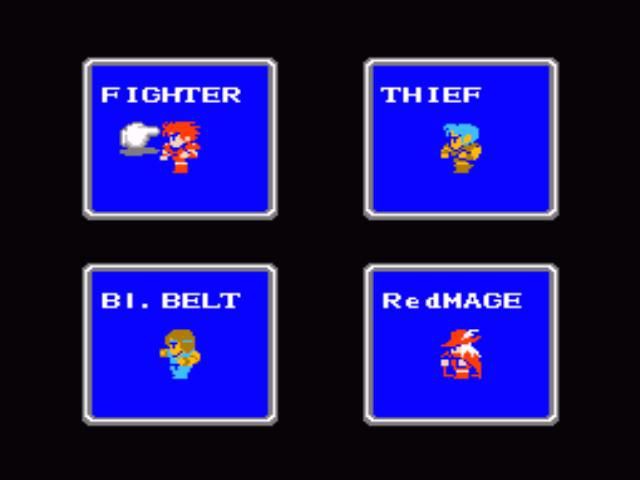
In the Famicon and NES version, when starting Final Fantasy, the player is presented with a brief premise of the plot and is then directed to a character customization screen to choose their name and classes, with six options available: Warrior, Thief, Black Belt, White Mage, Black Mage and Red Mage.
This was one of the biggest wins in its time and remains so today. The ability to customize your team allowed for different ways of playing and worked, in essence, as a difficulty meter.
If players wanted a simpler and safer experience, all they needed to do was have a team with two or more Warriors, capable of withstanding heavier attacks, accompanied by one or two White Mages to maintain the team's survival. Otherwise, if they wanted a more challenging experience, they could simply remove the Warriors or healers from the party, or try mage-only compositions.
Ad
This choice at the start guaranteed greater autonomy, and even a small change in your party's positioning or a different class could significantly increase the difficulty and strategies needed to get through a dungeon, or how much time would be invested to gain levels and accumulate resources for the next challenge.
At a time when beating games was already a great achievement, Final Fantasy went further and added different methods of starting the journey, and established new challenges among fans, such as the famous White Mage Challenge.
Visual Aesthetics and Soundtrack

In addition to the clear references and inspirations in the design of some monsters in D&D, Final Fantasy had its own visual attractions in its menu and combat interface.
Where other games relied on a first-person camera in battles, Final Fantasy allowed to see your characters in the right corner of the screen execute different animations when they attacked, cast magic, or when they were injured. The job improvement also stood out in this aspect, as it brought changes to the heroes' appearance, as if they matured during the journey.
While the Famicon and NES cartridges contained a significant limitation in their ability to emit sounds, Nobuo Uematsu began his historic milestone as a composer for the franchise since the first game, with some iconic songs that are reimagined even in more recent titles, such as the ever-famous Prelude.
A Challenging Journey
Games, in their core concept, were created to challenge and entertain.
Today, these two objectives merge with engaging narratives and traits that make games immersive and passionate content, in addition to prioritizing a more recent concept, known as Quality of Life - A series of elements and resources designed to make the game more accessible without having to change the gameplay. Most of them are invisible and integrated naturally into its core mechanics, like automatic saving, which is very common in modern titles.
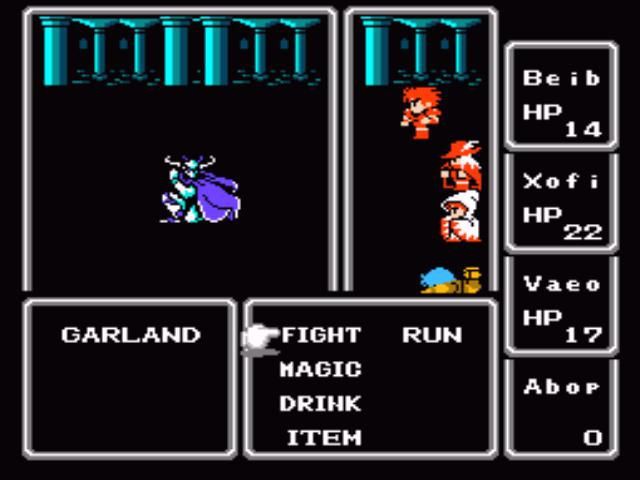
In 1987, quality of life in games was nonexistent. With short release deadlines and much smaller teams than those that develop games today (Final Fantasy took around ten months to be developed and released), many features were not planned or thought of, in addition to bugs being common and, often, imperceptible to the end consumer if they didn't take the time to find them.
In its original release, Final Fantasy was a nightmare in this regard. In addition to spells that didn't work as they should, attacks and spells didn't have automatic redirection and hit the “vacuum” where the enemy or ally used to be.
It also had no save points, making it necessary to use a Tent or rest in a town to save. There was also no way to save the game in a dungeon, meaning if the party was defeated there, the player would have to go through the entire dungeon again.
Ad
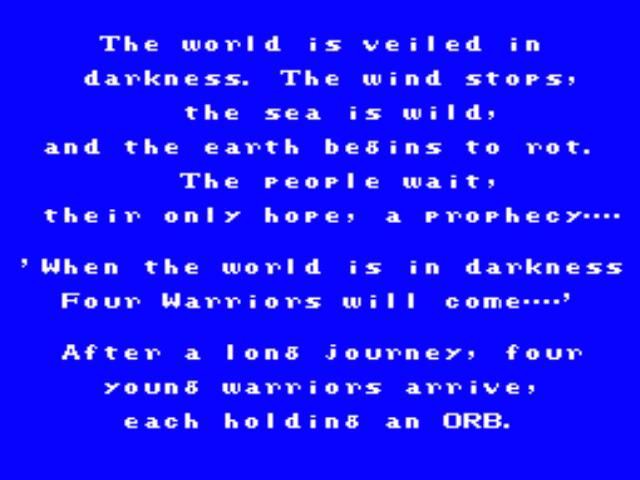
The limited memory space of the cartridges at the time limited the inventory size, which hindered opening chests, the items in the stores had no description and did not show which jobs could use them or whether they were better or worse than the items already equipped. Magics also didn't have descriptions of what they did, and if a bad or wrong spell was chosen, it wasn't possible to replace or forget it in the three spaces of each level.
If that wasn't enough, from the first minute, Final Fantasy never tells you what to do. The journey begins with the four warriors of light near Cornelia's castle, when talking to the NPCs, a completely optional action, we discover that the kingdom's princess has been kidnapped and, if we explore enough, we also discover her location through another NPC in one of the castle's corners.
For someone who doesn't know or has never played this title, the only way to understand what you need to do is to take the tips that NPCs give you and explore the accessible regions searching for the next objective, which feels tiresome, especially during the fetch items quests sequence.
Combat is also punishing and treacherous: sometimes small groups of enemies appear, which are easy to defeat in one round. In others, a group of nine monsters begins an ambush and may kill and/or poison one or two members before the first turn begins, and it is necessary to cast stronger magics to defeat them quickly, which means having one less resource to use against the boss, as there is no way to recover magic points without resting.
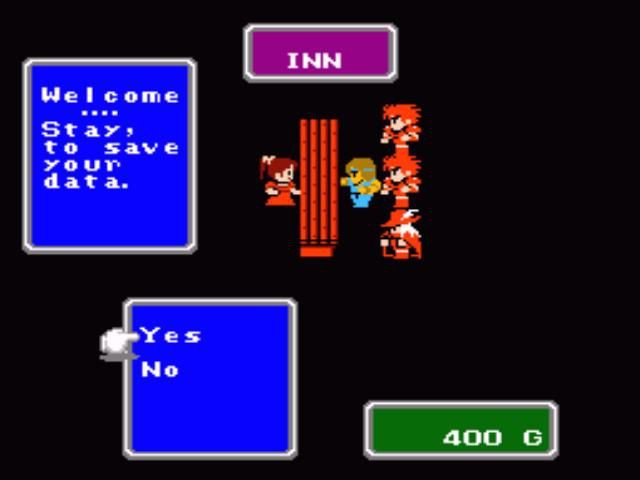
This combination of difficulty proposed by the developers, cartridge limitations, bugs and lack of quality of life as a concept made Final Fantasy a challenging journey in several ways.
Finding a dungeon meant planning how many levels gained and items would be needed to get through it, it was necessary to manage resources in each battle to reach the boss with enough HP and magic points to not be obliterated and need to start over, and defeating it guaranteed that satisfaction of having overcome another great challenge.
The experience of going through a dungeon in Final Fantasy on NES is reminiscent of a game in the Soulslike genre, where the player's lack of preparation is their limiting factor. If you fail, you will need to do backtracking, or you can take another chance in the dungeon and hope you don't face a large group of enemies or be punished for your carelessness while managing resources to have enough when facing the boss, survive and exit the dungeon to save the game with your newly acquired progress.
If you can't, you'll need to invest a few hours in facing monsters to get stronger and try again - this is part of the contemporary essence of Soulslike games.
Meaningful Sense of Achievement
If the dungeons are the most enduring challenge, defeating one of the four fiends and progressing with the story guarantees the feeling of overcoming a major obstacle and achieving further progress in the game.
Ad
This cadence between progress and challenge has been the basis of the entertainment of countless titles since the games' conception, and Final Fantasy provides a sense of achievement as an integral part of its narrative elements.

At the beginning, your access is limited to a small portion of the map made up of the city and castle of Cornelia, where you can interact with NPCs, buy equipment, spells, items and rest, and the Chaos Shrine, where Garland awaits.
When Garland is defeated, the king of Cornelia rebuilds the bridge that connects the kingdom to another region, unlocking more areas to explore, which leads to Pravoka, where defeating a group of pirates guarantees access to the ship and unlocks access to the seas and the various ports spread across the region.
Final Fantasy repeats this formula over and over in each stage: you need to do X to unlock Y to reach Z. With each progress, the world's horizons expand with new cities, spells, equipment, monsters and objectives, and maintain an exciting and meaningful experience from start to finish.
This methodology is a vital part of the franchise and was reproduced in several other titles, being improved as the narrative and gameplay patterns became more complex.
An Epic Adventure
Final Fantasy offers a plot that feels unmemorable and generic by current standards, but interesting and innovative for its time, where the lack of dialogue and notable characters are compensated by the sense of “epic adventure” that the journey of a group of chosen warriors provides since the beginning.
Here, the possibility of naming the four Warriors of Light stands out - a narrative aspect that lost its charm as plots became more complex and voice acting became a trend, but played a fundamental role in immersion.
Naming the characters had a collective sense. Including the names of friends, family members, or even fictional characters exercised the player's imagination, and even allowed a group of friends to play together at home, where each person 'commanded' one of the characters.
The plot is also quite greedy for its time: Final Fantasy begins by explaining the pre-apocalyptic state in which the world finds itself, and how its people believe in a prophecy where a group of adventurers carrying crystals will save them from ruin.
By intention or chance, the first act of the journey begins with saving a princess while confronting the villain.

From this point forward, the plot walks through typical features of medieval fantasy as the heroes encounter witches, elves, dwarves, vampires, sages, mermaids and dragons while exploring a vast world full of mysteries, with caves, volcanoes and sunken shrines.
As the story progresses, Final Fantasy takes a bolder stance with airships, robots, deadly machines ready to kill the party, a floating fortress - and it goes a little further by inserting time travel into its final arc.
Ad
The explanation behind the time loop is confusing and borders on nonsense, but it works as intended: making the adventure more epic. The heroes travel two thousand years into the past to confront one last enemy and put an end to the cycle, but not before facing the four fiends you worked so hard to defeat in each dungeon along the way
All this leads to the final battle against the embodiment of every challenge you've faced so far in the last effort to save the world.
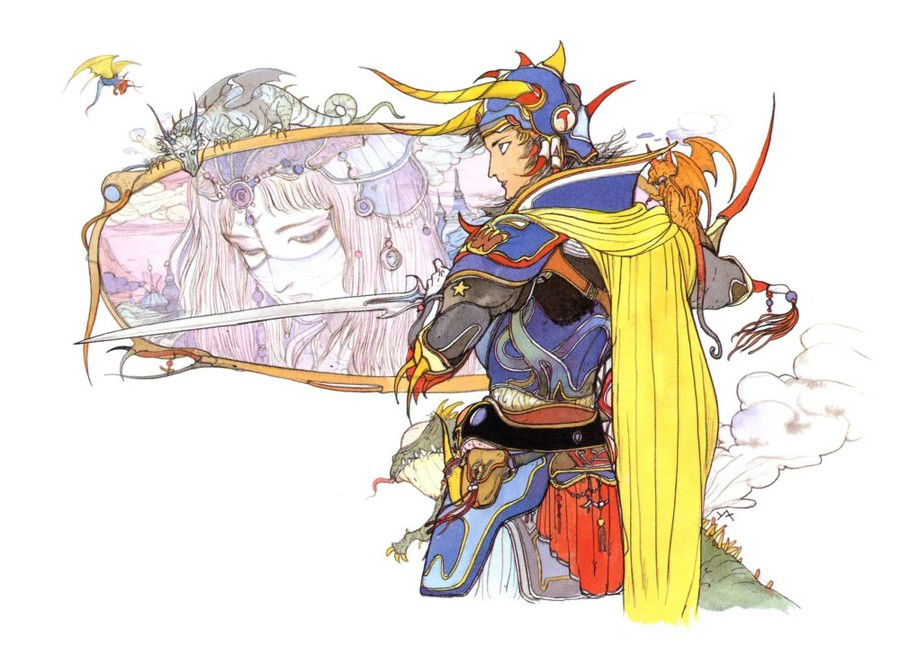
This brings us to the last and most important narrative aspect of the game: Final Fantasy seeks to talk to the player. It opens up space for their imagination to be part of the work when naming characters, choosing jobs, exploring the world, talking to NPCs and facing monsters.
The “silent protagonists” place the responsibility for interacting and exploring this universe on the interlocutor, and in the closing screen, the game thanks the player for restoring light to the world. After all, it was through their decisions that the Warriors of Light were able to fulfill their destiny.
No matter how simplified its proposal was, Final Fantasy ends with a glorious achievement for the player, one of which a young person in front of their small screen TV and video game can be proud after spending days facing each challenge and overcoming every boss.
Nintendo Power
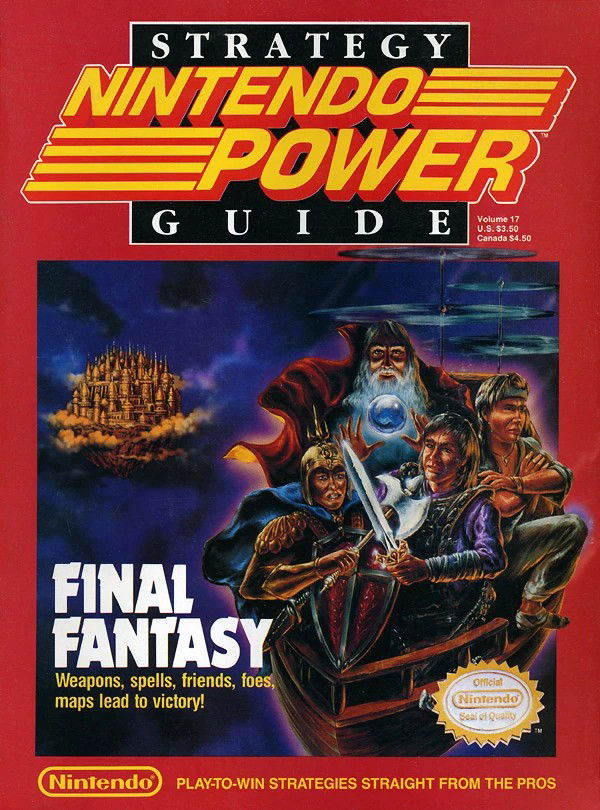
As in Final Fantasy VII, the influence and power of advertising and media on the success of this work should not be underestimated.
In 1990, Final Fantasy was translated and released in North America. In addition to the artistic rework to resemble Western medieval fantasy, Nintendo published an extensive 80-page guide for the game, with a step-by-step for each stage divided into chapters, as well as information about magics, treasures, enemies, dungeons and other details.
These magazines greatly influenced game consumption patterns in North America, and were certainly a determining factor in the sales of Final Fantasy in the West, in addition to helping in the efficient progress of the journey for young people experiencing an electronic RPG for the first time, and saving time for more experienced players.
Replayability
Being an adventure that took days to finish, Final Fantasy didn't fit the mold of games that could be completed often in a short period. However, when compared to other RPG titles, it offered much greater diversity with its party system, with up to 126 possible combinations.

As each class offers a distinct function with its own balance of qualities, changing one or two members already increased the difficulty and required greater planning to go through the dungeons and face monsters and bosses. While repeating the same story with different combinations seems tedious today, adding this level of replayability in 1987 meant ensuring more enjoyment for the product Square was selling.
Ad
Is the first Final Fantasy worth playing?
It depends.
Final Fantasy I doesn't keep up with contemporary narrative or gameplay quality standards, not even in its most recent versions. If you want to get to know the franchise or are a fan of it, the first game offers more than enough to entertain and give the same sense of progress and achievement that it did in 1987.

Unless you want to experience the game the way it was first designed and released, I would never recommend the NES version to anyone: it is slow, and its usability is counterintuitive in several aspects.
Instead, I recommend trying the Pixel Remaster version, with all the mechanics and features of the original title, without the bugs and with excellent quality of life improvements.
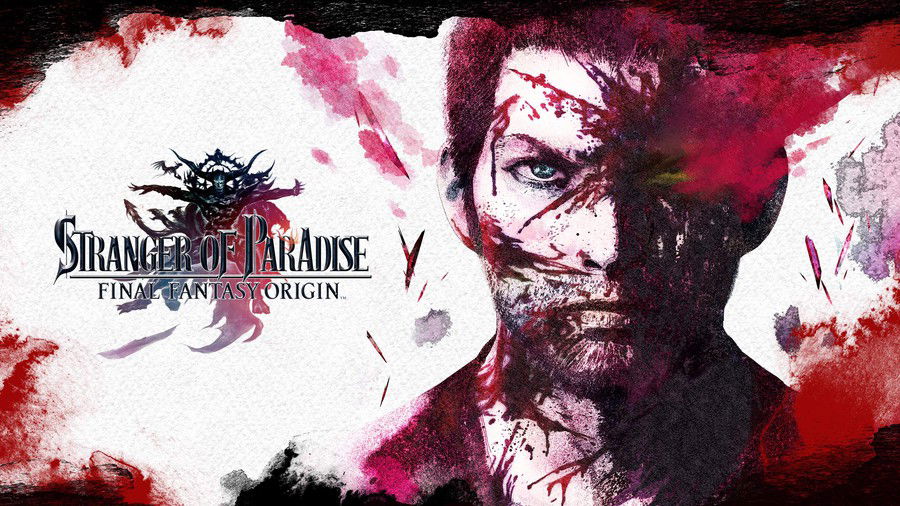
And if you want to delve deeper into this universe, Stranger of Paradise: Final Fantasy Origin is a non-canonical spin-off that uses the same world, themes and characters from the first game in the franchise to tell its story based on the events of the original work. It was released in 2022 and is available for PlayStation 5, PlayStation 4, Xbox One, Xbox Series and PC.
Conclusion
The journey in 1987 left its legacy and spanned generations, and understanding how Final Fantasy began and where its origins meet contemporary titles in the most varied aspects brings us a new perspective on the scope between respect for its roots and innovation that the series seeks in each game.
Without Cornelia, there would be no other amazing kingdoms like Alexandria. Without the silent protagonists, we wouldn't have such striking characters, heroes and heroines in the franchise today, and without all the elementary world-building of the first game, Final Fantasy would never have expanded and created exciting new universes.
Thanks for reading!


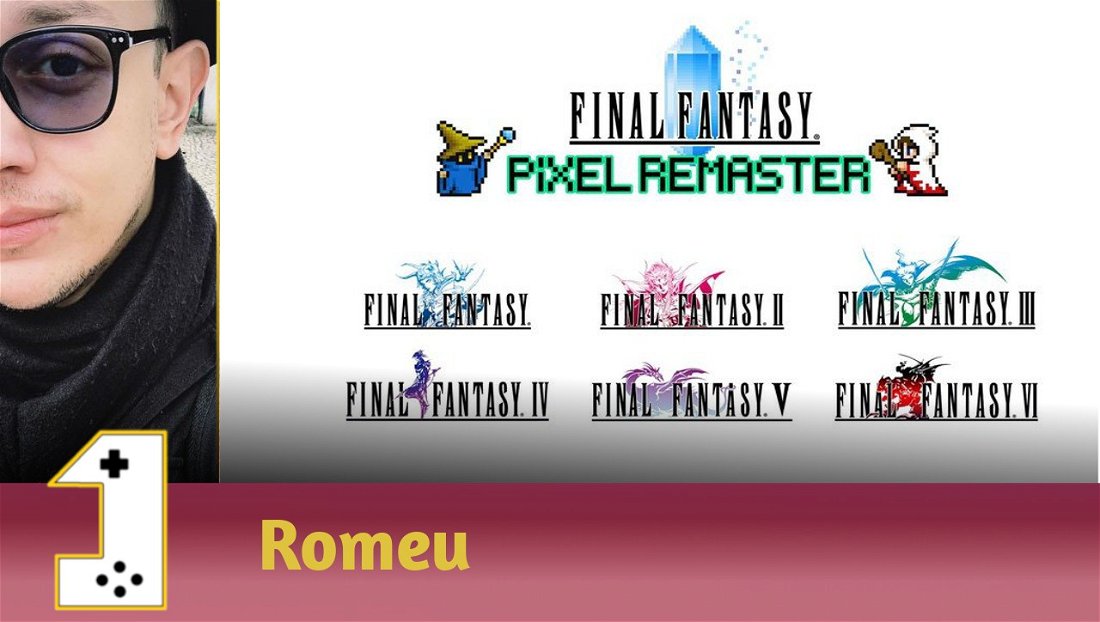
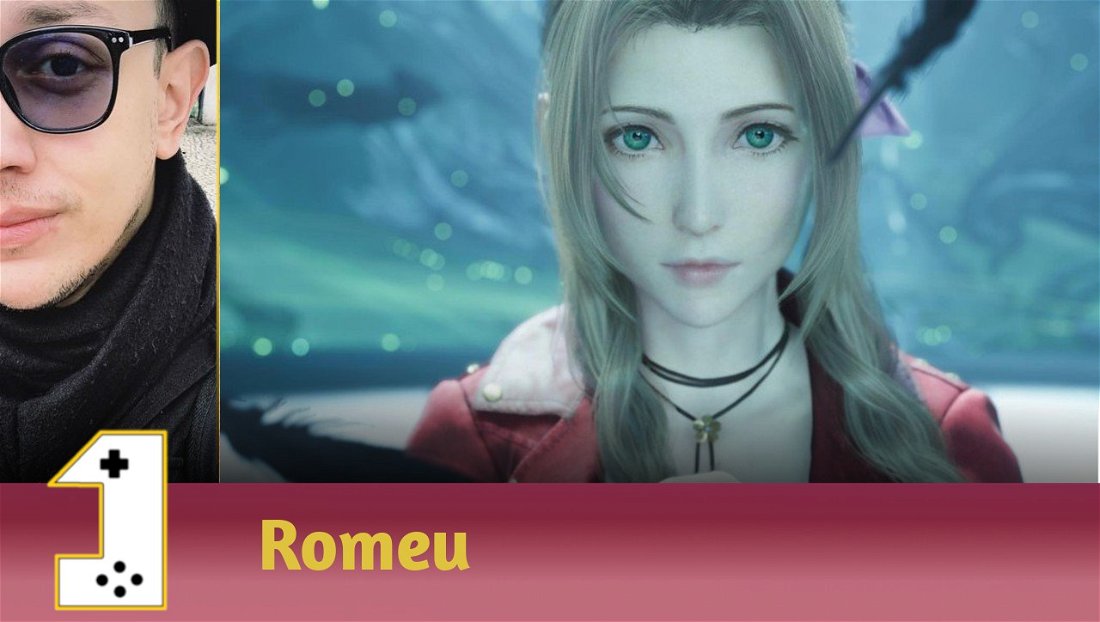



— Comments0
Be the first to comment